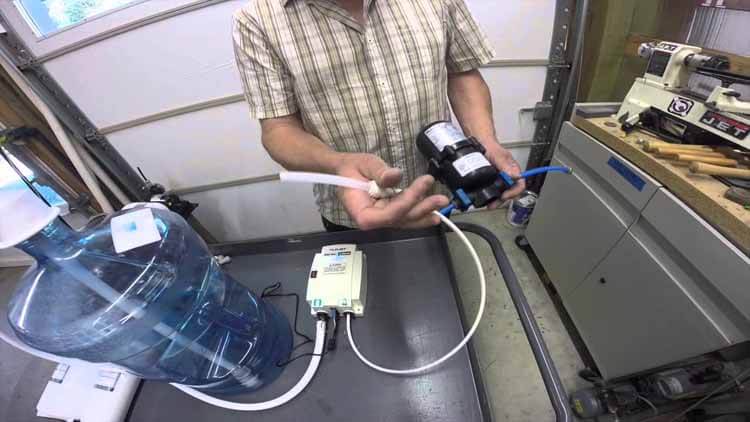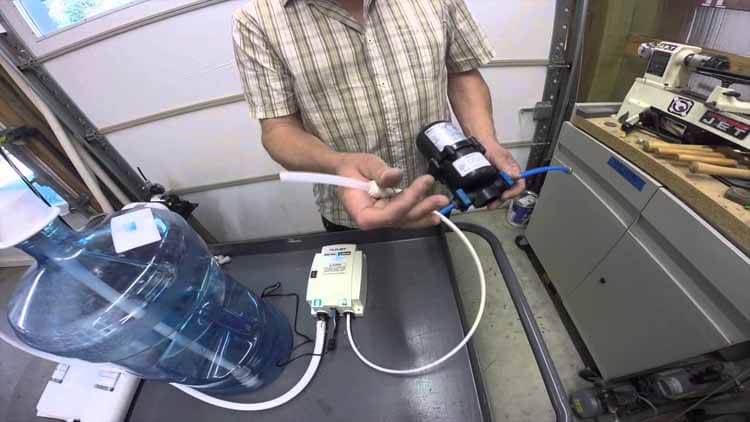Espresso is a concentrated component of coffee that is processed in the form of shots. It is enjoyed by all on a regular basis. Almost every cup of coffee you have in a coffee shop, yes, you guessed it, it’s an espresso.
It emerged in the early 20th century with the origin of espresso machines. Due to our growing love for coffee, we are all buying espresso machines for home.

Unfortunately, sometimes we are stuck with bad products. If you are in such a situation and wondering how to test if Igot a bad pump in espresso machine, we got you covered.
Here, we will give you all the details about espresso machine pumps and ways to test if they are faulty.
What Is An Espresso Machine?
An espresso machine delivers coffee by driving high-pressure water around the boiling point through a coffee puck and a sieve to create a smooth, blended coffee named espresso. In Italy, the first machine was invented and licensed in the late 19th century.
What Are the Parts Of An Espresso Machine?
Let’s get to know the essential parts;
Porta-Filter
The filter component of the machine is accountable for maintaining the coffee beans. It appears in a small basket form, and it’s completely removable from its place on the machine.
Here, the coffee is stored, and it is secured to a large steel handle. There are two beams beneath the porta-filter, and that’s where the coffee pours down.
Reservoir
Inside an espresso machine, there is a reservoir. And, it is the storehouse for cold water. Before initiating the coffee brewing process, it is essential to check the water inside.
The reservoir, in compact espresso machines, is also easily removable.
Heat Exchanger or Boiler
The heat exchanger is essentially a metal tube that is wired to electricity. It is necessary to boil the air that comes from the pump to make the coffee. These are features that are usually just noticed in larger and more professional machines.
Most semi-automatic espresso machines designed for everyday use at home generally have a small boiler instead.
Both of these models include a thermostat that controls the heat needed to make an espresso.
Pump
And lastly, and most importantly, there is the pump inside the machine. It is the heart of the espresso machine.
It goes through the heat exchanger and transfers water to the filter from the reservoir. The pump operates on electricity and makes a lot of noise, especially the vibratory ones.
Fundamentally, it helps to build the friction that is vital to the process of coffee making.
What Are The Different Types Of Pumps In Espresso Machines?
Now, there are two main types of pumps when it comes to espresso machines- vibratory pumps and rotary pumps.
Vibratory pumps are simple electromagnetic ones, where a pump attached with a magnet is placed within a metal coil. And, electricity flows across the coil, which causes the magnet to rock inside the piston, driving water into the machine.
Rotary pumps are the true professionals among the high-end espresso machines. And they are also quiet and robust.
What Are The Differences Between Vibratory Pumps And Rotary Pumps?
With reference to matters of these two types, so far, nobody has been able to substantiate that one is actually superior to another based on its capacity to produce strong espresso.
Noise
Vibratory pumps are usually louder than rotary pumps. However, some have succeeded in modifying their vibratory systems to keep them very fairly silent.
Quality and Size
This is another obvious difference. While vibratory pumps are smaller, rotary ones are bigger and appear in a relatively study frame. The sturdiness of the pump and its quality also influences its noise production or lack thereof.
Lifespan
Due to the quality and a number of other variables, rotary pumps have a longer lifespan. On the other hand, vibratory pumps only last about 5 to 6 years.
Cost of Machine and Replacement
Generally, espresso machines with rotary pumps are more expensive due to their better build and noise-free mechanism.
But, machines with vibratory pumps come at a much cheaper price point. And the best part about these machines is that the pumps can easily be replaced. So, even if your vibratory pump malfunctions, you can replace it for about $50.
How To Test If You Got A Bad Pump In Espresso Machine?
If you’re worried you got a bad bump, there are a couple of ways to check if your gut is right. Here are a few ways to know if your espresso machine has a bad pump.
When the machine is producing loud noises.
If this is an issue with a machine with a vibratory pump, then you have nothing to worry about. Those pumps are known for making excess sounds. But that will definitely not get in the way of producing excellent quality coffee.
Unlike vibratory pumps, rotary pumps are built with a different kind of motor. So, they don’t make much or any noise when brewing coffee.
So, if your rotary espresso machine is producing loud noises, it is highly likely the pump is defective.
When the machine is dispensing coffee too fast or too slow
If the coffee comes out too fast, it might have little or no amount of cream on the surface and be too watered down. This is indicative of a fault with the pump.
Correspondingly, if the coffee comes out too slow, it might generate a bitter taste, as well as a burned smell and aftertaste. The slower flow of espresso is certainly a sign of a faulty pump.
When the machine is not dispensing coffee
Pumps and pump heads fail on a regular basis; you can usually tell by the noise the pump is making if the problem is here.
But if there is no additional noise, it is somewhat difficult to know if there’s a problem with the pump.
However, if the machine continues to not dispense coffee, there must be something wrong with the pump. If the pump is not broken, it is highly likely that it is clogged.
So, you must descale your machine regularly. Descaling is a way to clear the condensation layers that are formed on certain sections due to the passing of water. And, monthly descaling will prevent such situations.
Recommended article: How Does An Espresso Machine Work
Conclusion
Hopefully, you now knowhow to test if I got a bad pump in espresso machine, and have a clearer understanding of the matter.
You first have to understand your espresso machine and its pump to be able to know if your pump is bad.

